🔦 PWDRs like designers and product managers help gather valuable user insights but need the right training and tools to do it well
💡 Research democratization isn’t about replacing researchers it’s about making research a team effort while experts handle the big complex studies
🔍 Researchers can make PWDRs more effective by sharing simple frameworks training and easy-to-follow best practices
🔧 Giving PWDRs the right tools makes research smoother more reliable and less intimidating
🐝 UXtweak takes the guesswork out of research with easy-to-use tools and automatic insights. Try UXtweak for free!
Research doesn’t just happen in a lab or behind mountains of data; it happens everywhere. Designers, product managers, marketers, and many others gather insights to guide their decisions, even if research isn’t their main role.
These People Who Do Research (PWDRs) play a crucial part in shaping products, experiences, and strategies. However, juggling research alongside other responsibilities isn’t always easy.
Without the right tools, support, and mindset, research can feel overwhelming or ineffective. So, how can organizations help PWDRs do their best work?
Let’s explore their challenges, what they need, and how to make research more accessible and impactful for them.
Who do we mean by “people who do research?”

“People who do research” refers to anyone who systematically investigates a topic to gather insights, validate assumptions, or solve problems. This can include:
👉 Academic researchers (professors, students, scientists)
👉 Market researchers (analyzing consumer behavior, trends)
👉 UX researchers (studying user behavior and experience)
👉 Business analysts (validating market opportunities)
👉 Journalists (fact-finding for reporting)
👉 Product managers (understanding user needs)
Basically, anyone who seeks answers through structured inquiry!
💡 Did you know?
When non-researchers conduct UX research, the biggest challenge is to maintain quality.
A Reddit user shared concerns about business analysts performing user testing without UX involvement, leading to subpar outcomes:
“They make UX recommendations… and they have completely cut any actual UX people out of the process.”
Should research be done only by researchers?
Research is a specialized skill, but that doesn’t mean only professional researchers should conduct it. As Zora Neale Hurston said:
“Research is formalized curiosity. It is poking and prying with a purpose.”
That curiosity isn’t limited to researchers, as anyone making decisions about users, products, or experiences benefits from asking the right questions.
The key is ensuring they do it correctly. Here are a few considerations:
📍 Expertise matters, but research can’t be a bottleneck
Professional researchers bring structure, minimize bias, and ensure research is reliable. But if every research task required a specialist, teams would struggle to move quickly.
Similarly, a marketing team testing ad copy doesn’t always need a full-scale research project. A/B testing different versions can provide actionable insights faster.
While complex studies like medical usability testing require experts, many research tasks can be handled by non-researchers without compromising quality.
💡 Did you know?
The best UX researchers prioritize mindset over skill set. As one Reddit user noted:
“Excellent UX researchers aren’t ego-driven. The goal isn’t to be right or even prove hypotheses, it’s to uncover questions & solutions.
📍 PWDRs are already doing research, let’s do it right
Most designers, product managers, and marketers don’t decide to do research, it just happens.
A designer watching users struggle with a feature, a marketer testing campaign messages, or a product manager reading support tickets, all of them are gathering insights.
But without proper training, they might ask leading questions, misinterpret data, or confirm their own biases. That’s where the People Who Do Research (PWDRs) concept, introduced by Kate Towsey, comes in.
Instead of treating research as an exclusive club, organizations should equip PWDRs with research best practices, giving them just enough structure to avoid pitfalls while still keeping research accessible.
📍 Collaboration creates stronger, smarter research
Think of a team designing a new app. The researcher has deep expertise in methodology, but the product manager understands user pain points, and the designer knows how people interact with interfaces.
If research stays locked within one role, it misses out on these valuable perspectives.
When researchers and PWDRs collaborate, magic happens. Researchers can ensure rigor, while PWDRs bring real-world context.
💡 Pro Tip
Want to dive deeper into who does research? Watch this video for more insights on how different roles contribute to research and why it matters.
What research is considered good research?

Good research isn’t just about collecting data; it’s about uncovering insights that lead to better decisions. As Albert Szent-Györgyi put it:
“Research is seeing what everybody else has seen and thinking what nobody else has thought.”
That means research isn’t just about asking questions; it’s about asking the right questions in the right way.
So, what separates good research from bad research? Here are a few key factors:
Know what you’re looking for
If you don’t know what you’re trying to learn, your research will feel incomplete.
Before you begin, define your research goal. Are you testing a new feature? Understanding why users drop off? Identifying pain points?
A well-framed research question keeps everything focused and ensures your findings are useful.
💡 Pro Tip
A good research question should be specific and actionable. Instead of “What do users think about our app?”, ask “What challenges do new users face in the sign-up process?”
Use the right tools for the job
You wouldn’t use a microscope to measure a room, right? The same goes for research.
If you need broad trends, creating a survey might work. But if you want to understand how people interact with your product, usability tests or in-depth interviews are better.
Want to include user interviews in your UX research?
Try UXtweak’s Live Interviews! Seamlessly schedule, recruit, conduct, and analyze your all user interviews.
⬇️ Learn more about the feature and be the first to try it!
Choosing the wrong method can lead to misleading results.
📌 Example: Imagine a team trying to understand why users abandon checkout. A survey asking “Why did you leave?” might help, but watching users struggle with confusing form fields in a usability test could reveal the real problem.
Talk to the right people
Good research isn’t just about talking to enough people; it’s about talking to the right people. If your participants don’t reflect your actual users, your findings won’t be useful.
For example, a food delivery app researching user behavior shouldn’t just survey employees who order lunch every day.
They should include busy parents, students, and late-night workers who use the app differently.
💡 Pro Tip
Recruiting diverse participants helps uncover perspectives you might not have considered. If possible, include both new and experienced users to get a well-rounded view.
Stay curious, not leading
The way you ask questions influences the answers you get. If you ask, “How much do you love our new feature?” you’re nudging users to say something positive.
Instead, a neutral question like “How has your experience been with this feature?” allows for more honest feedback.
Recording user sessions or having a second person review findings to catch any unconscious bias can go a long way.
Conduct research that drives decisions
Good research doesn’t just sit in a report; it leads to real improvements. If findings don’t translate into action, they aren’t valuable.
For example, if research reveals that users struggle to find key features in an app, the next step could be redesigning navigation or adding tooltips.
The best research connects insights to clear next steps for design, product, or business teams.
In practice, you can summarize findings with a simple “So what?” statement. It’s helpful to ask “What does this mean?” and “What should we do next?” for every insight.
💡 Pro Tip
Great UX research leads to better design decisions. If you’re looking for a deeper dive into UX principles, check out this guide on UX design!
How can we support people who do research?

Empowering People Who Do Research (PWDRs) doesn’t mean replacing professional researchers. It means strengthening research across the organization.
When non-researchers are equipped to gather insights effectively, decisions improve, and research teams can focus on complex, high-impact work.
💡 Tip 1: Build a research-friendly culture
If research is seen as “someone else’s job,” teams won’t engage with it. Organizations should make research a shared responsibility by encouraging curiosity, data-driven thinking, and user-centric decision-making.
📌 Example: Make research findings visible and share insights in team meetings, Slack channels, or internal newsletters. The more teams see research in action, the more likely they’ll want to participate.
💡 Pro Tip
Curious about how UX researchers and UX designers collaborate? Check out this deep dive on UX researchers vs. UX designers to understand their unique roles and how they complement each other.
💡 Tip 2: Provide training without overloading
Not everyone needs to be a research expert, but basic training helps prevent common mistakes. Simple workshops on interviewing techniques, survey design, or bias reduction can go a long way.
By offering just enough training—short guides, templates, or recorded sessions—PWDRs can confidently run small-scale research without feeling overwhelmed.
💡 Tip 3: Helping PWDRs choose the right tools for research
Good research is way easier with the right tools. PWDRs don’t need complex setups; they need simple, effective ways to gather insights without second-guessing themselves.
UXtweak makes research effortless with an easy setup, handy guides, and a built-in user panel for finding and recruiting participants from more than 130 countries.
It also does the heavy lifting with automatic analytics (so no one has to crunch numbers manually) and auto-generated reports that make sharing insights easier. Try it for free today! 🐝
💡 Tip 4: Match the tool to the research need
Not every question needs a full-blown study. Sometimes, a quick poll or usability test will do the job. Help PWDRs pick the right tool for what they need by creating a simple decision guide.
For instance, the decision guide can look like this:
Need to test multiple designs? → use a preference testing tool
Want quick feedback? → use a survey platform
Need to observe user behavior? → use a usability testing tool
💡 Tip 5: Make research tools easy to access and use
Even the best tools won’t be used if they’re hard to access. Ensure that PWDRs know what’s available, how to use it, and when to ask for expert guidance.
It’s best to centralize all research tools in a shared knowledge base with simple “how-to” guides and real-world examples of when to use each tool.
💡 Pro Tip
Many UX designers expand their skills into research and strategy. If you’re thinking about this career path, here’s a guide on how to become a product designer.
Teaching PWDRs to limit bias in their research sessions

Bias can creep into research in subtle ways; through the way questions are asked, how participants are selected, or even how findings are interpreted.
While professional researchers are trained to minimize bias, People Who Do Research (PWDRs) may not always be aware of these pitfalls.
Here’s how PWDRs can limit bias in their research:
Ask neutral, open-ended questions
The way a question is framed can influence responses. Leading questions push participants toward a specific answer, while neutral wording allows for more honest feedback.
Instead of asking, “How much do you love our new feature?”, ask “How has your experience been with this feature?”
💡 Pro Tip
Avoid assumptions in your questions. “What do you think of the homepage?” is better than “Did you find the homepage easy to use?” because it doesn’t assume the experience was positive.
Diversify your participants
If research is only conducted with the same type of users (e.g., internal employees or power users), the results won’t reflect the full spectrum of your audience.
Recruit participants from various demographics, experience levels, and backgrounds to get a well-rounded perspective.
📌 Example: A team redesigning a shopping app should include participants with different levels of tech familiarity, not just experienced online shoppers.
Avoid confirmation bias in analysis
It’s easy to interpret data in a way that supports what you already believe. To prevent this, researchers should look for patterns across multiple users instead of focusing on one or two opinions that align with their expectations.
📌 Example: If two participants say a feature is confusing but eight say it works well, don’t overemphasize the negative feedback just because it confirms your initial concerns.
Have a second person review findings to challenge assumptions and bring a fresh perspective.
Create consistent research conditions
Changes in tone, body language, or phrasing can unintentionally influence responses.
If one researcher introduces a usability test in a friendly, casual way while another sounds more formal, participants may respond differently based on the tone.
That’s why using a script for usability tests and interviews is useful to keep the experience consistent across participants.
🔽 Try usability testing yourself with UXtweak’s website and prototype testing tools!
Recognize the impact of observer bias
The presence of a researcher can change how participants behave. If a participant feels they’re being evaluated, they might try to give the “right” answers instead of their honest opinion.
In a usability test, for instance, a participant might hesitate to say a feature is confusing if they think the researcher worked on it.
💡 Pro Tip
Reassure participants that there are no right or wrong answers and that their feedback is valuable no matter what. Watch this video for more on minimizing bias in UX research! 📺
Wrapping up
Research isn’t just for researchers. It’s for anyone making decisions that impact users. When more people can gather insights correctly, research teams get to focus on the big, strategic questions.
At the same time, everyday decisions become more informed and user centered.
The goal isn’t to replace researchers. It’s to build a culture where research happens everywhere, leading to better products and happier users.
UXtweak is a great solution for people who do research to help them with their research initiatives.
Ready to make research easier for your team? Try UXtweak for free and see how effortless user research can be! 🐝









📌 Example: if a product team needs feedback on a new feature, waiting for a formal study could slow down development. Instead, a designer or product manager can run quick user interviews to identify usability issues.